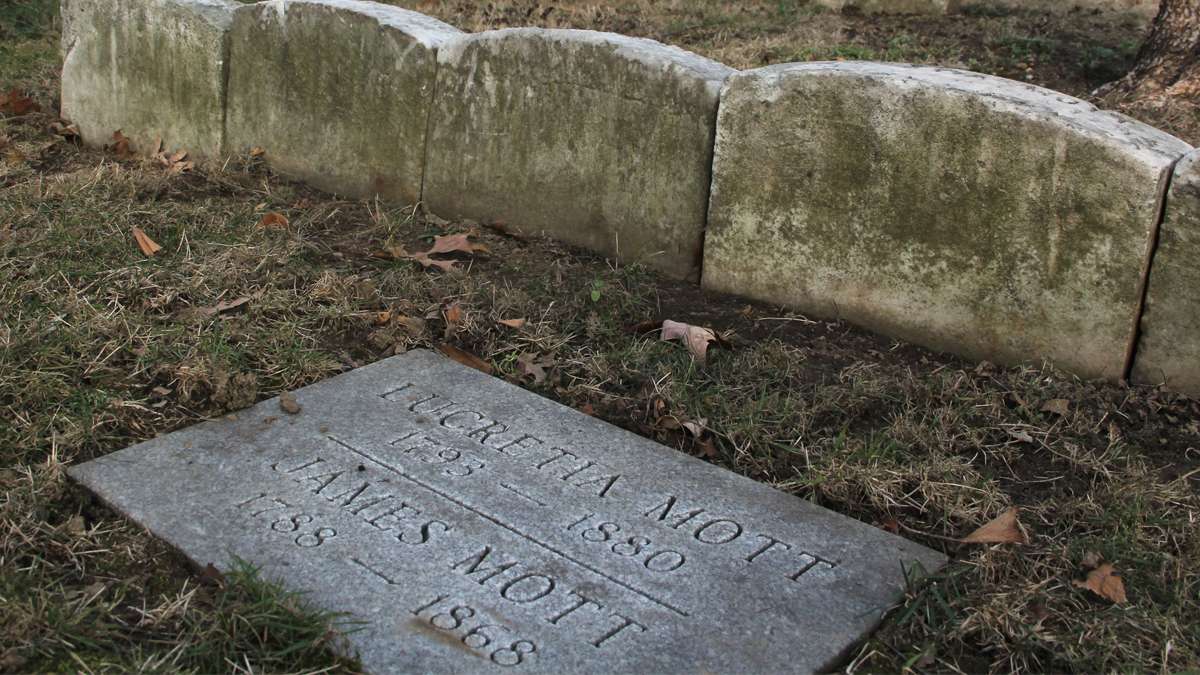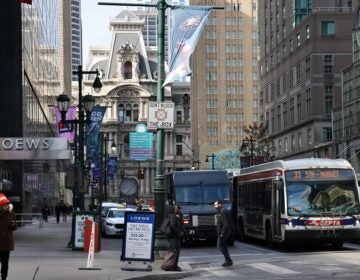Weekend tour to highlight Northwest Philly’s Underground Railroad history

Fair Hill Burial Ground
In the late 1940s, Charles L. Blockson — an African-American author, scholar and collector who placed historic markers in Germantown to commemorate the Johnson House and the first American anti-slavery petition — raised his hand in his fourth-grade history class.
They were learning about “American heroes” like George Washington and Benjamin Franklin, he remembered, but Blockson had a question for his white teacher in Norristown: What role did Negroes play in American history?
“The teacher told me that Negroes were born to serve white people,” Blockson recounted. “She wasn’t exactly a bigoted person. She was a victim of her environment, because a lot of other people felt the same way.”
Blockson mentioned that vignette while speaking this week with NewsWorks about a special four-hour bus tour of Underground Railroad sites on Germantown Avenue, coming up on Saturday.
A $5 start to a world-famous collection
At 15, Blockson found his passion, and his roots, in a used bookstore.
There, he picked up an old copy of Philadelphia abolitionist William Still’s “The Underground Railroad,” a meticulous and daring record of the escaped former slaves who passed through Philadelphia, which was published in 1872.
“It flops open in his hand, and there’s a picture of his uncle arriving in Canada [via the Underground Railroad],” said Larry Robin, director of the tour-sponsoring Moonstone Art Center.
Blockson bought the book for $5, and it was the first volume of what is now Temple University’s Charles L. Blockson Afro-American Collection, which Robin calls “one of the premier deposits for African American history and literature.”
Blockson gathered the collection during a lifetime of travels in this country, Africa and the Caribbean. He donated it to Temple in 1984.
It includes prints and photographs, manuscripts, letters, documents, broadsides, sheet music, narratives from figures like Sojourner Truth and Frederick Douglass and treasures like first-edition works of Phyllis Wheatley and W.E.B. DuBois.
Discovering Philly’s Underground Railroad
Robin has a decades-long passion for books and political and literary activism.
He knew he had to bring Blockson (now in his eighties) on board when we was developing Moonstone’s month-long Underground Railroad in Philadelphia Festival, which features 26 events across the city this month.
Saturday’s bus tour of Germantown sites departs from Center City’s African American Museum and travels to eight historic sites along Germantown Avenue, from Fair Hill Burial Grounds to Plymouth Meeting Friends Meeting House.
Robin said he first became fascinated by Underground Railroad history after reading a book about a vital but little-known figure: the wealthy Robert Purvis (1810-1898), born in South Carolina to a white father and a black mother.
Purvis worked closely with the Philadelphia Vigilance Committee, which helped to protect people from slave-catchers. He was also a founder of the Anti-Slavery Society in Philadelphia and an important member of William Lloyd Garrison’s American Anti-Slavery Society.
“Incredible bravery”
Robin was transfixed by the “incredible bravery” of those who traveled and worked the Underground Railroad.
“Think of slavery, and think of people who have been prevented from learning to read and write, and they don’t know geography, and they’ve been dragged here from another country,” he said.
According to his research, an estimated 100,000 people escaped on the Underground Railroad, and 40,000 of them came through Philadelphia, which Blockson calls “a very important terminal.”
That was because of Philadelphia’s proximity to the Mason-Dixon Line, its large population of free black people, its abolitionist Quaker community, its many churches and its seaport location.
Thousands came by ship, train and foot. Many passed through sites in Germantown and Plymouth Meeting which, unlike many Underground Railroad sites in the U.S., are still standing today.
Rare resources
Blockson noted that “Germantown always excited me” since he grew up just miles away from sites including the Johnson House.
In fact, he spent four years collecting historical documents which conclusively connect Johnson House and Plymouth Meeting sites as Underground Railroad stops.
He will join Saturday’s tour at that site and share stories through the final stop in Plymouth Meeting.
Blockson is known for his decade-long fight to erect about 100 historic markers documenting African American history in the area, even as some sites were demolished. These include Still’s home on 12th Street, torn down just two months before a marker was posted.
“I almost cried,” said Blockson, whose family members’ journeys were recorded in Still’s diaries during an era when everyone else working the Railroad destroyed their records in fear of the Fugitive Slave Act.
“The worst form of enslavement”
Those personal stories are what will make the tour shine, Robin said.
In developing the tour, his goal was to “make it big enough so you get some spin, and make it particular enough so those fascinating details come out.”
He’s excited to share the “amazing thing about the abolitionist movement,” which he calls the first “interracial populous mass movement of people helping other people.”
That included men, women, and children, blacks, whites and Native Americans who also played a part in harboring escaped slaves.
The ultimate goal of the tour and the Underground Railroad Festival is to whet locals’ appetite for Philly’s historical goldmine, Robin added.
That’s why Moonstone made a special agreement with Historic Germantown: Everyone who buys a ticket to the Underground Railroad tour will also receive a year-long passport to every Historic Germantown site.
For his part, Blockson said he loves to help people learn.
“Ignorance is the worst form of enslavement,” he said. “An ignorant person is an enslaved person … no matter what color he is.”
The Underground Railroad bus tour of Germantown ($25) will gather at the African American Museum in Philadelphia, 701 Arch St., at 12:30 p.m on Saturday, stop at eight historic sites between Germantown and Plymouth Meeting and return to the Museum at 4 p.m. For tickets and more information, visit Moonstone Arts Center’s website.
WHYY is your source for fact-based, in-depth journalism and information. As a nonprofit organization, we rely on financial support from readers like you. Please give today.




